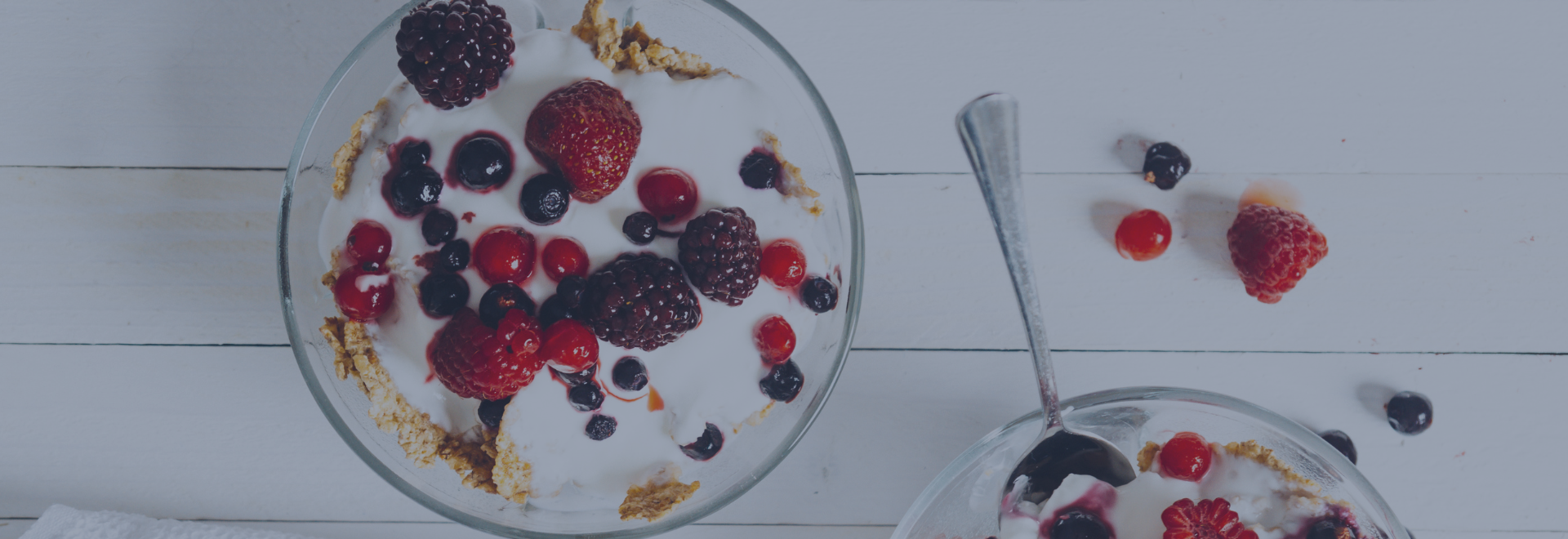Growth continues in the global yoghurt market
The yoghurt market continues to see good growth globally, with an estimated $109.49 billion in sales and 44.17 million tonnes in production volume for 2023 (1). Increases in sales (+4.3% CAGR) and volume (+6.5%) from 2021 to 2023 are similar to category growth since 2010 (+5.6% and +5.4, respectively) (2) indicating yoghurt is maintaining its relevance and meeting consumers’ needs.
Yoghurt provides many benefits to consumers, including a portable ready-to-eat format, affordability, flavour variety and healthy nutrition. The trends in protein snacks and functional snacks are important drivers of growth in the category since yoghurt is known for its protein and probiotic content, alongside its calcium. This week our Glanbia Nutritionals team offers the latest insights on yoghurt trends for 2024.
2024 yoghurt trends
With more consumers seeking nutritious and enjoyable food and beverage products, the future looks bright for the yoghurt category. As yoghurt companies compete on innovation, some important trends are underway:
1. High protein
Globally, 25% of recent yoghurt launches featured a "high source of protein" claim (up 3 percentage points in four years) (1). In North America, it was 42% (2). According to US consumers, high protein ties with low sugar as the most important attribute of a yoghurt (3).
Among recent US yoghurt launches, "high or added protein" was the second most frequent claim (with low/no/reduced fat as the top claim) (4). Protein is well known for its satiety benefits—especially important in a breakfast or snack and for weight management. Fortifying with protein or highlighting the product’s natural protein content is an opportunity to grab the attention of today’s consumers.
2. New flavours
Nearly half of consumers globally enjoy yoghurt because they think it’s tasty (5), a key insight for any yoghurt brand focusing primarily on their products’ health and nutrition attributes. 46% of global consumers on average are influenced by flavour when purchasing yoghurt (reaching as high as 63% in Brazil) (6).
Some brands are using new flavours or flavour combinations to stand out in the yoghurt aisle, understanding that consumers are seeking a balance of healthy and great tasting. Examples include florals and spices complementing fruit flavours, such as mango hibiscus (Two Good Greek Yoghurt) and blueberry & cardamom (Activia Less Sugar & More Good), and for kids, blue raspberry and green apple (Yoplait Gushers).
3. Plant-based
To address consumers’ interest in plant-based, major yoghurt brands have been adding dairy-free yoghurts to their portfolios. US examples include Chobani Oat Plant-Based Oat Blend, Activia Dairy-Free Almond Milk Yoghurt Alternative and Yoplait’s Oui Dairy Free Coconut Dairy Alternative.
Though the US continues to lead in plant-based yoghurt sales, at $382 million, there was sales growth around the world between 2021 and 2023, including in the US (+10.7% CAGR), the UK (+7.3%), Germany (+4.6%), Canada (+4.3%) and Australia (+3.6%) (7). Globally, vegan claims on yoghurt launches have nearly doubled in four years, growing from 5% to 9% (8).
4. Less sugar
Alongside protein, low sugar is rated as the most important attribute in yoghurt among US consumers (9). The less sugar trend is taking hold across the food and beverage industry due to a more proactive approach to health by many consumers as they seek to manage things like weight, blood sugar and inflammation.
Some new products target reduced sugar—like Activia Less Sugar & More Good (with 40% less than its regular Greek nonfat yoghurt) and Siggi’s Kids yoghurt pouches (with 50% less than other kids’ yoghurts)—while others have no added sugar, often relying on fruit for sweetness. More than 1 in 10 of recent yoghurt launches globally featured no added sugar claims (up 4 percentage points since 2018) (10), indicating consumers’ interest in less sugar is gaining traction.
5. Clean label
In the US, the most important factor influencing food and beverage choices continues to be natural ingredients (11). Naturalness and other clean label attributes are especially desired in products like yoghurt, which consumers tend to perceive as healthy — 51% of consumers globally who eat yoghurt do so because they think it’s healthy (12).
The leading clean label claim showing up in recent yoghurt launches is no additives/preservatives (present in 34% of launches in the US, 22% in Asia Pacific and 13% in Europe) (13). GMO-free and natural claims on new yoghurts are the most prominent in the US (at 24% and 12%, respectively), while Europe leads in organic claims (14).
Supporting better nutrition
Glanbia Nutritionals has the ingredients businesses need to give consumers the healthy nutrition and delightful sensory experience they expect. From enticing Flavours by Foodarom to our functional protein solutions like UltraHi® Protein Yoghurt Technology and OptiSol®1005 and 1007 dairy proteins, we have many solutions to help companies meet the 2024 yoghurt trends. Find out more here.
